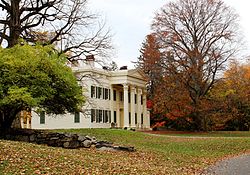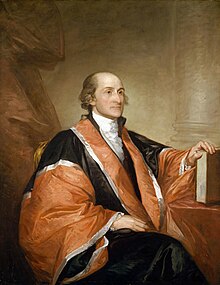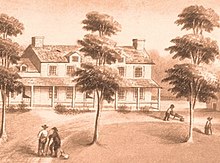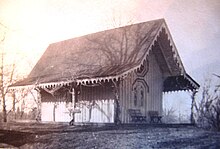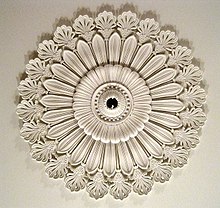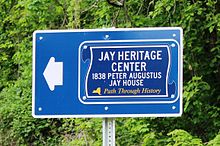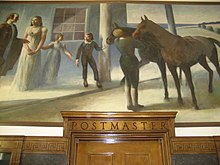
Westchester County is located in the U.S. state of New York. It is the seventh most populous county in the State of New York and the most populous north of New York City. According to the 2020 United States Census, the county had a population of 1,004,456, its highest decennial count ever and an increase of 55,344 (5.8%) from the 949,113 counted in 2010. Located in the Hudson Valley, Westchester covers an area of 450 square miles (1,200 km2), consisting of six cities, 19 towns, and 23 villages. Established in 1683, Westchester was named after the city of Chester, England. The county seat is the city of White Plains, while the most populous municipality in the county is the city of Yonkers, with 211,569 residents per the 2020 U.S. Census.
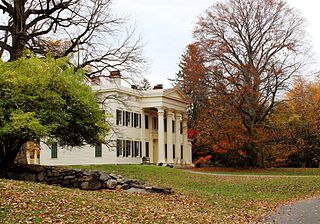
Rye is a coastal city in Westchester County, New York, United States, located near New York City and within the New York metropolitan area. It is separate from the Town of Rye, which has more land area than the city. The City of Rye, formerly the Village of Rye, was part of the Town until it received its charter as a city in 1942, making it the youngest city in the State of New York. Its population density for its 5.85 square miles of land is roughly 2,729.76/sq mi.

Kykuit, known also as the John D. Rockefeller Estate, is a 40-room historic house museum in Pocantico Hills, a hamlet in the town of Mount Pleasant, New York 25 miles north of New York City. The house was built for oil tycoon and Rockefeller family patriarch John D. Rockefeller. Conceived largely by his son, John D. Rockefeller Jr., and enriched by the art collection of the third-generation scion, Governor of New York, and Vice President of the United States, Nelson Rockefeller, it was home to four generations of the family. The house is a National Historic Landmark owned by the National Trust for Historic Preservation, and tours are given by Historic Hudson Valley.
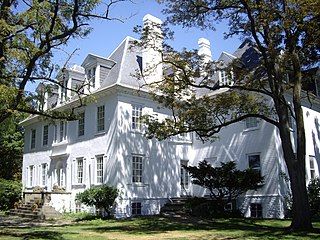
The Clermont State Historic Site, also known as the Clermont estate, the Clermont Manor or just Clermont, is a New York State Historic Site in southwestern Columbia County, New York, United States. It protects the former estate of the Livingston family, seven generations of whom lived on the site over more than two centuries.

Lyndhurst, also known as the Jay Gould estate, is a Gothic Revival country house that sits in its own 67-acre (27 ha) park beside the Hudson River in Tarrytown, New York, about a half mile south of the Tappan Zee Bridge on US 9. The house was designated a National Historic Landmark in 1966.
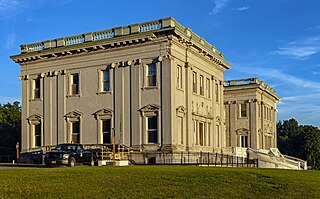
The Staatsburgh State Historic Site preserves a Beaux-Arts mansion designed by McKim, Mead, and White and the home's surrounding landscape in the hamlet of Staatsburg, Dutchess County, New York, United States. The historic site is located within Ogden Mills & Ruth Livingston Mills State Park. The mansion, a New York State Historic Site, is considered a fine example of the great estates built during the Gilded Age.

Schuyler Mansion is a historic house at 32 Catherine Street in Albany, New York. The brick mansion is now a museum and an official National Historic Landmark. It was constructed from 1761 to 1765 for Philip Schuyler, later a general in the Continental Army and early U.S. Senator, who resided there from 1763 until his death in 1804. It was declared a National Historic Landmark on December 24, 1967. It is also a contributing property to the South End–Groesbeckville Historic District, listed on the National Register of Historic Places in 1984.

Villa Lewaro, is a 34-room 20,000-square-foot (1,900 m2) mansion located at Fargo Lane and North Broadway in Irvington, New York, 30 miles north of New York City. It was built from 1916 to 1918, and was designed in the Italianate style by architect Vertner Tandy for A’lelia Walker, for her mother, Madam C.J. Walker. An additional site, the Dark Tower Walker residence with business occupancy, was established in New York City's Harlem neighborhood, thus completing the Walker property portfolio.
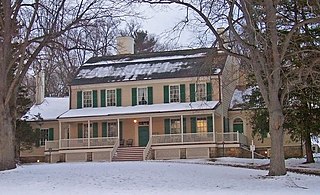
The John Jay Homestead State Historic Site is located at 400 Jay Street in Katonah, New York. The site preserves the 1787 home of Founding Father and statesman John Jay (1745–1829), one of the three authors of The Federalist Papers and the first Chief Justice of the United States. The property was designated a National Historic Landmark in 1981 for its association with Jay. The house is open year-round for tours.
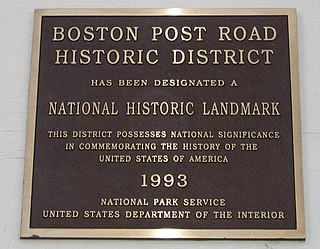
The Boston Post Road Historic District is a 286-acre (116 ha) National Historic Landmark District in Rye, New York, and is composed of five distinct and adjacent properties. Within this landmarked area are three architecturally significant, pre-Civil War mansions and their grounds; a 10,000-year-old Indigenous peoples site and viewshed; a private cemetery, and a nature preserve. It is one of only 11 National Historic Landmark Districts in New York State and the only National Historic Landmark District in Westchester County. It touches on the south side of the nation's oldest road, the Boston Post Road, which extends through Rye. A sandstone Westchester Turnpike marker "24", inspired by Benjamin Franklin's original mile marker system, is set into a wall that denotes the perimeter of three of the contributing properties. The district reaches to Milton Harbor of Long Island Sound. Two of the properties included in the National Park designation are anchored by Greek Revival buildings; the third property is dominated by a Gothic Revival structure that was designed by Alexander Jackson Davis.

The Jay Heritage Center (JHC) is a 501(c)(3) not-for-profit organization incorporated in 1990 and chartered by the New York State Board of Regents to act as stewards of the 23-acre Jay Estate, the National Historic Landmark home of American Founding Father John Jay. Jay's ancestral property in Rye, New York is considered the centerpiece of the Boston Post Road Historic District.

Peter Augustus Jay was a prominent New York lawyer, politician and the eldest son of Founding Father and first United States Chief Justice John Jay.

Philipsburg Manor was a manor located north of New York City in Westchester County in the Province of New York. Netherlands-born Frederick Philipse I and two partners made the initial purchase of land that had been part of a Dutch patroonship owned by Adriaen van der Donck. Philipse subsequently bought his partners out and added more land before being granted a royal charter in 1693 for the 52,000 acres (21,000 ha) estate, becoming its first lord.

Mapleton, also known as St. Joseph House, is a historic building located at White Plains, Westchester County, New York. It was added to the National Register of Historic Places in 1976.

The Scarborough Historic District is a national historic district located in the suburban community of Scarborough-on-Hudson, in Briarcliff Manor, New York. The 376-acre (152 ha) district was added to the National Register of Historic Places in 1984, and contains seven historically and architecturally significant properties dating from the late 18th century to the early 20th century. Most of the properties are domestic, or used for education or religion. The most common architectural styles within the district are Mid-19th Century Revival and Late Victorian.
There are numerous nationally and locally designated historic sites and attractions in Westchester County. These include architecturally significant manors and estates, churches, cemeteries, farmhouses, African-American heritage sites, and underground railroad depots and waystations. There are sites from pre-Revolutionary and Revolutionary times, as well as battlegrounds. Westchester County also played an important role in the development of the modern suburb, and there are many associated heritage sites and museums.

Mary Rutherfurd Jay (1872–1953) was one of America's earliest landscape architects and an advocate of horticultural education and careers for women. The great-great granddaughter of American Founding Father John Jay, she grew up in Rye, New York surrounded by the gardens of her ancestral homestead at the Jay Estate in Westchester County overlooking Long Island Sound. Her education was fostered by travel abroad with her mother and domestically through classes in design and horticulture taken at the Massachusetts Institute of Technology (MIT) and the Bussey Institute in Forest Hills, Massachusetts.

The African American Heritage Trail of Westchester County in New York was created in 2004 to help preserve and interpret the historic landmark places that help tell the narratives of women and men of African descent who have made significant contributions to an American identity. The initial list had 13 sites. Westchester County historian and Schulman History Honoree Dr. Larry Spruill was lead consultant and researcher for the project.
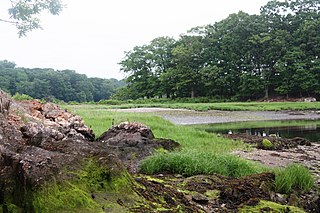
Marshlands Conservancy is a 147-acre nature preserve in the city of Rye, New York, that is fully owned and operated by Westchester County Parks. It has numerous wildlife habitats from ponds to creeks to a large meadow area, succession forest, freshwater wetlands and the only extensive salt marsh in Westchester. It borders Long Island Sound and can be entered via an easement on the historic Boston Post Road. It is one of 5 properties that together constitute the Boston Post Road Historic District. It has high archaeological sensitivity. The conservancy has also been designated an Important Bird Area.
